I have never understood the hifi-hype of LS50 nonetheless the "idol" LS3, the lightweight speech monitor for mobile broadcast units of '60s
I think it's the crossover and the enclosure. I have two sets of KEF speakers, and the LS50 sounds different.
An externally hosted image should be here but it was not working when we last tested it.
Here is the KEF LS50

Here is the KEF 207/2
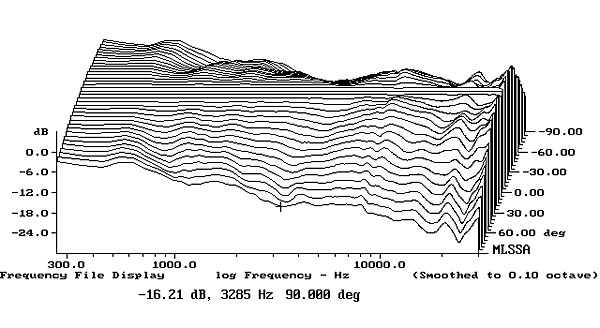
Here are the horizontal polars of the LS50
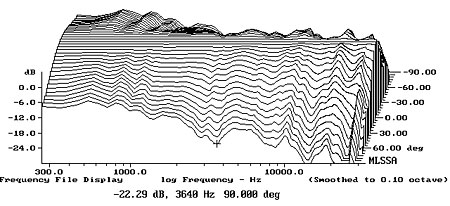
Here are the horizontal polars of the 207/2
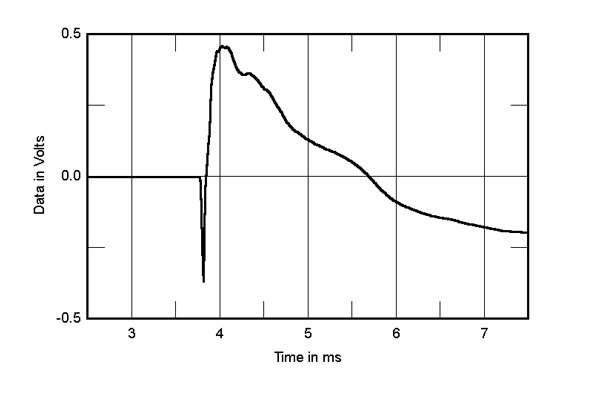
Here is the step response of the LS50
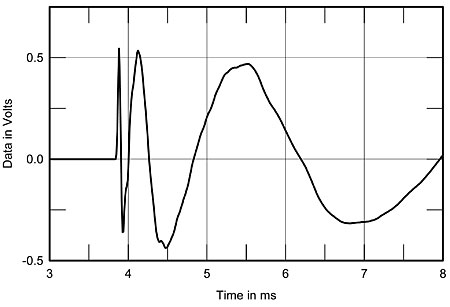
Here is the step response of the 207/2
If we look at the loudspeaker enclosure, the polar response, and the step response, there's only one thing that's changed dramatically : the step response of the LS50.
Twenty one years ago, John Dunlavy wrote "Last, but not least, I would like to remark that if I had to choose but one measurement of a loudspeaker from which I would be required to determine and describe most of its performance properties, including frequency response, phase response, impulse response, etc., it would be "step response". For those familiar with step response and what it has to reveal about so many important properties (at a mere glance), it is a true gem in disguise."
A couple years back I rented a Danley SH50 and played it in the same room as a Lambda Unity Horn. It was very interesting how the two designs *appear* similar but *sound* different. And I think the difference is largely the crossover. Danley invested a lot of time and effort in the SH50's crossover, refining it to the point that it will play square waves. And to do THAT, you need near-perfect step response.
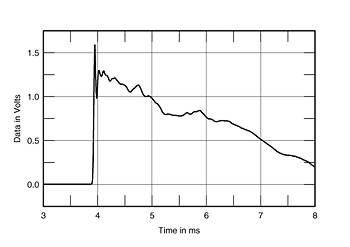
For comparison's sake, here's the step response of Dunlavy's SC-IV
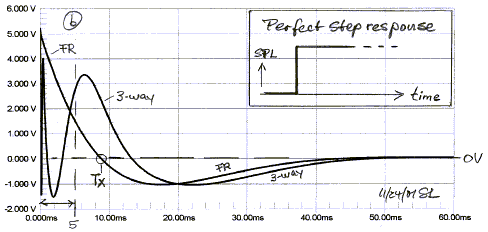
And the ideal step response, from Linkwitz's site
Jack Oclee-Brown said they didn't want to make the flattest measuring speaker but the smoothest sounding. Reason for that philosophy is beyond me.
I am not sure what "smooth" sounding speaker means, but I know how the original LS 50 sounds and the one with the upgraded crossover from Ton-Feile. And there is no comparison, that the Ton-Feile version sounds so much better (clearer, more true), which is no wonder when you look at the frequency response.
It is nonsense to say that a non-linear frequency response would be sounding "good" or smooth or whatever. Sure one can find a certain recording where a coloured sounding speaker masks for example the shortcomings in the recording, but overall a non-flat speaker will never be what we aim for and what sounds "smooth", "good" or whatever attribute you want to call that.
Of course on-axis response is only a part of the picture, but a (certain) flatness is required for sure -- which the original LS 50 misses to some extent!
But for DIYers I would not buy a LS50 to mod it, but choose another option and build a new speaker right away. The user Ton-Feile has created a speaker called "Tafal", which outperforms the LS50. Another great option is the "Duo DXT" or some of the derivates which came over the time like "DXT Mon" and others. All three mentioned examples built by very experienced DIYers, who are all also active in some kind of other in audio / sound for a professional living. They develop speakers not to a market or price point, but to deliver the best results possible they have in mind and one can achieve.
I am not sure what "smooth" sounding speaker means, but I know how the original LS 50 sounds and the one with the upgraded crossover from Ton-Feile. And there is no comparison, that the Ton-Feile version sounds so much better (clearer, more true), which is no wonder when you look at the frequency response.
I believe you.
It is nonsense to say that a non-linear frequency response would be sounding "good" or smooth or whatever. Sure one can find a certain recording where a coloured sounding speaker masks for example the shortcomings in the recording, but overall a non-flat speaker will never be what we aim for and what sounds "smooth", "good" or whatever attribute you want to call that.
I think you're missing the big picture. Of course you can make a loudspeaker sound smoother by making a dip in power response at the right spot. Will it sound more natural - most likely not. Will it adhere to some people - you bet it will. Also, many recordings were and are made with crappy equipment and much of them sound kinda nasal on speakers with flat power response. That's why some people avoid flat measuring loudspeakers saying that they don't sound natural, but actually their recordings of choice are bad.
But for DIYers I would not buy a LS50 to mod it, but choose another option and build a new speaker right away. The user Ton-Feile has created a speaker called "Tafal", which outperforms the LS50. Another great option is the "Duo DXT" or some of the derivates which came over the time like "DXT Mon" and others. All three mentioned examples built by very experienced DIYers, who are all also active in some kind of other in audio / sound for a professional living. They develop speakers not to a market or price point, but to deliver the best results possible they have in mind and one can achieve.
This is one thing i completely disagree. Although i'm familiar with Rainer Feile and consider Tafal great little speaker, it will newer be as good as LS50 can be. Kef LS50 done right is superior to Tafal in every possible way. Tafal suffers from tweeter diffraction while LS50 does not because it has a waveguide. Off axis response of Seas tweeter used in Tafal is dreadful compared to LS50 tweeter - thanks to tangerine waveguide. Kef used CLD in LS50 - you could use it with Tafal but to what extent is beyond me. Horizontal off axis is almost the same as vertical in LS50 so you get more uniform sound field in all directions, something Tafal (or any of the loudspeakers you've mentioned) will never be able to do.
Are Tafal, Duo DXT and DXT Mon any good ? Yes.
Are they worthy of hassle following any DIY build ? Probably yes.
Are they better than modified LS50 ? No.
I can't remember one thing i'd do in a small two way loudspeaker that isn't already done in LS50; CLD, Al/Mg cones, flexible port, curved front, 50mm midwoofer coil radius, tweeter in a waveguide and it comes in white. I'd always buy new or used LS50 in finish that is suits me and modify it before i'd bother with woodwork, finish, glue, making CLD with questionable outcome, buying drivers etc. But that's just me
Last edited:
I think you're missing the big picture. Of course you can make a loudspeaker sound smoother by making a dip in power response at the right spot. Will it sound more natural - most likely not. Will it adhere to some people - you bet it will. Also, many recordings were and are made with crappy equipment and much of them sound kinda nasal on speakers with flat power response. That's why some people avoid flat measuring loudspeakers saying that they don't sound natural, but actually their recordings of choice are bad.
Likely we're on the same page I guess. I did not meant that people might not possibly prefer a coloured sounding speaker. For example I'm well aware that if you listen to 70 or 80s Rock music that can sound thin often on a neutral speaker. Especially when looking at headphones we see that many people even prefer extremly coloured sound.
This is one thing i completely disagree. Although i'm familiar with Rainer Feile and consider Tafal great little speaker, it will newer be as good as LS50 can be. Kef LS50 done right is superior to Tafal in every possible way. Tafal suffers from tweeter diffraction while LS50 does not because it has a waveguide. Off axis response of Seas tweeter used in Tafal is dreadful compared to LS50 tweeter - thanks to tangerine waveguide. Kef used CLD in LS50 - you could use it with Tafal but to what extent is beyond me. Horizontal off axis is almost the same as vertical in LS50 so you get more uniform sound field in all directions, something Tafal (or any of the loudspeakers you've mentioned) will never be able to do.
Are Tafal, Duo DXT and DXT Mon any good ? Yes.
Are they worthy of hassle following any DIY build ? Probably yes.
Are they better than modified LS50 ? No.
I can't remember one thing i'd do in a small two way loudspeaker that isn't already done in LS50; CLD, Al/Mg cones, flexible port, curved front, 50mm midwoofer coil radius, tweeter in a waveguide and it comes in white. I'd always buy new or used LS50 in finish that is suits me and modify it before i'd bother with woodwork, finish, glue, making CLD with questionable outcome, buying drivers etc. But that's just me
I get your point. In this case I think our opinion differs in fact. I did not meant that the modded LS50 is not a good speaker. It's great and way better than most other options in that price range. But it's not perfect, like no speaker is and can be perfect. I personally favour the Duo DXT over the LS50. That difference in our opinion might be because of different listening environments we have or different characteristics we look for in a speaker or just different tastes.
But surely all those options are very good ones and much better than most others in that price range.
For myself I would not choose the Tafal or DXT Mon, because of the bass register not going deep enough for me (without a sub). I also find the LS 50 lacking in bass register a bit, albeit not that much. I think an active version of any of the mentiones speakers -- especially the ones with a larger mid/bass driver would be really close to "the" speaker. I haven't heard the LS50 wireless yet, but I'll surely try to get a chance to listen to it. Also the new Elac active speaker in the same price range (2000 Euro) might well be very interesting.
I also understand that you see the advantages of a coaxial system -- which are really there. But it's again not "perfect". I had a KEF x300 on my desktop and was not happy with the performance -- that was both in bass extension, but also in the overal coherence. Both in absolute terms, but also compared to a good full-ranger (e.g. Alpair 10) gives for example. Is a fullrange speaker (based on Alpair 10 for example) better than a coaxial solution? No, it's not overall. It has advantages on one side but disadvantages on the other side. If you want to listen loud(er) and / or in different locations in the room the coaxial system likely will be better suited to this use case. To use in a fixed position -- possibly at lower listening levels too. The fullranger might be the better fit.
For speakers, even very good solutions, there will not be the holy grail. Some favour the benefits you can get with a (pseudo-) coaxial design, while others like Siegfried Linkwitz prefer not to use them for specific reasons.
But interesting to hear that for you the modded LS 50 is "the" speaker to choose in that price range. Did you buy a pair of LS50 and changed the crossover or do you use a LS50 wireless or what is your choice in the end where you are "happy"?
I had a 5.1 system once, using these.......
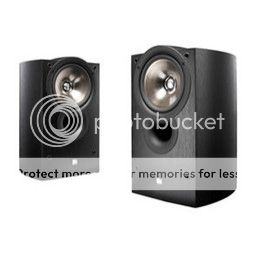
They where awful. I really wanted to like them because they are so nice looking and I like the coax design.....
But, they where the most boxy sounding speakers I've ever owned. I'm sure it was the porting and x-over design.
I really like the coax, and I'm sure if handled actively, they would have really shined, but I didn't have the equipment at the time.
Very old post I know but I had a pair of these and agree that they aren't very good. The older Kef Coda 8 was much better.
I get your point. In this case I think our opinion differs in fact. I did not meant that the modded LS50 is not a good speaker. It's great and way better than most other options in that price range. But it's not perfect, like no speaker is and can be perfect. I personally favour the Duo DXT over the LS50. That difference in our opinion might be because of different listening environments we have or different characteristics we look for in a speaker or just different tastes.
But surely all those options are very good ones and much better than most others in that price range.
I couldn't agree more. I like DXT MON the most out of three mentioned and consider Alexander Heißmann one of two god engineers on the diy scene. Other one being Jon Marsh
For myself I would not choose the Tafal or DXT Mon, because of the bass register not going deep enough for me (without a sub). I also find the LS 50 lacking in bass register a bit, albeit not that much. I think an active version of any of the mentiones speakers -- especially the ones with a larger mid/bass driver would be really close to "the" speaker. I haven't heard the LS50 wireless yet, but I'll surely try to get a chance to listen to it. Also the new Elac active speaker in the same price range (2000 Euro) might well be very interesting.
LS50 wireless sounds better than passive version. I listened them both few minutes apart. I think they've fixed the stuff they left untreated in passive version. At least it sounds so. 2000 euros is a pretty hefty price though.
I also understand that you see the advantages of a coaxial system -- which are really there. But it's again not "perfect". I had a KEF x300 on my desktop and was not happy with the performance -- that was both in bass extension, but also in the overal coherence. Both in absolute terms, but also compared to a good full-ranger (e.g. Alpair 10) gives for example. Is a fullrange speaker (based on Alpair 10 for example) better than a coaxial solution? No, it's not overall. It has advantages on one side but disadvantages on the other side. If you want to listen loud(er) and / or in different locations in the room the coaxial system likely will be better suited to this use case. To use in a fixed position -- possibly at lower listening levels too. The fullranger might be the better fit.
For speakers, even very good solutions, there will not be the holy grail. Some favour the benefits you can get with a (pseudo-) coaxial design, while others like Siegfried Linkwitz prefer not to use them for specific reasons.
But interesting to hear that for you the modded LS 50 is "the" speaker to choose in that price range. Did you buy a pair of LS50 and changed the crossover or do you use a LS50 wireless or what is your choice in the end where you are "happy"?
Kef X300 has few problems, one of them being design for a certain price point. They could design it to be as good as LS50W, but then how could they sell the LS50W for that amount of money ? I almost bought that before i decided for another model.
LS50 passive my friend bought with stands for 700 euros a year old. I'm working on them and i don't use Rainer's crossover. I am making my own of course. Tweeter needs a bit work too.
For myself i chose Kef R300 - because of dedicated bass and because i don't want to let waveguide for my tweeter move few milimeters back and forward
One thing though (i'll get in trouble for this) tweeter in Kef R300 with modified crossover is much better than Seas DXT in Kii3 that i listened. It is great in Kii three but then you play the same recording on R300 and it just gets better. Kef obviously done things right but they design the crossover and with that a whole sound for a price point.
Last edited:
Last edited:
There is a thread on this forum:
https://www.diyaudio.com/forums/mul...d-measurements-raw-drivers-5.html#post5605934
This is updated crossover:
https://s15.postimg.cc/jovbh6s3v/image.png
And measurements on and off axis:
Last edited:
The original R300 has a sensitivity of official 88 dB/W/m and 3.2 Ohms minimum. With your crossover?
KEF R100 has the same 5.25" coaxial
SoundStageNetwork.com | SoundStage.com - NRC Measurements: KEF R100 Loudspeakers
Total Harmonic Distortion + Noise

KEF LS50
SoundStageNetwork.com | SoundStage.com - NRC Measurements: KEF LS50 Loudspeakers
Total Harmonic Distortion + Noise

KEF R100 has the same 5.25" coaxial
SoundStageNetwork.com | SoundStage.com - NRC Measurements: KEF R100 Loudspeakers
Total Harmonic Distortion + Noise

KEF LS50
SoundStageNetwork.com | SoundStage.com - NRC Measurements: KEF LS50 Loudspeakers
Total Harmonic Distortion + Noise

Last edited:
The original R300 has a sensitivity of official 88 dB/W/m and 3.2 Ohms minimum. With your crossover?
Here is my measurement factory vs modified on axis.
https://s15.postimg.cc/mysuaxv57/image.jpg
One thing though (i'll get in trouble for this) tweeter in Kef R300 with modified crossover is much better than Seas DXT in Kii3 that i listened.
Interesting project to make a new crossover for the R300! Thanks for sharing
Alexander is planning a new DXT-Mon version right now with a larger Wavecor woofer. I'll have a look on that. This could be also very interesting.
^New FA firmware was released a week ago. I haven't downloaded it yet but it looks promising, specially regarding sleep/wake problems
https://www.diyaudio.com/forums/class-d/326748-hypex-fusion-bug-wishlist-7.html#post5674398
https://www.diyaudio.com/forums/class-d/326748-hypex-fusion-bug-wishlist-7.html#post5674398
R300 would be great with 2xHypex FA123 but i'm waiting for few bugs to be fixed and to stabilize the production of it. Then i'm gonna go active - dsp controlled. But i'll listen them passive for a couple of years for sure.
I wanted to buy those plateamps too, but after the latest price increase and taking into account that with my AS2.100 module I still have some problems and the new FA series also giving troubles I will very likely buy a used AVR amp with enough channels and use "Equalizer APO" on the PC, which is my source anyway. I'll check if I will go the HDMI route or use a multi-channel soundcard.
And if I want a standalone-version I could use MiniDSP.
Just a question regarding voicing. If you compensate for the stereo system errors related to the +/- 30° speaker position you should have have 1-2 dB extra energy around 1-2 kH and a dip 2-4 kHz of 1-2 dB. The exact amount depends on the dispersion characteristics of the speaker. The LS50 appears to be opposite of that. Those of you have compared side-by-side to a speaker "opposite" of the LS50, what is your impression?
The original R300 has a sensitivity of official 88 dB/W/m and 3.2 Ohms minimum. With your crossover?
KEF R100 has the same 5.25" coaxial
No, it doesn't.
Dr. Oclee Brown posted here some time ago about the differences between Q100, R100, and LS50 concentrics. The R300 has an entirely different design, being a dedicated midrange-tweeter.
Here, #40 by jackocleebrown
KEF LS50
KEF LS50
Hi Pallas,
The drivers from the Q series, R series and LS50 all share a common lineage. The Q were the first to be developed in around 2010 as a concerted effort to get some of the features of the Concept Blade drivers into affordable loudspeakers. Over the years following the launch of the current Q range we have refined and tweaked the drivers resulting in those used in the R and LS50 drivers.
A quick summary:
There are 5.25, 6.5 and 8inch Uni-Q driver in the Q range. This discussion is focused on the 5.25inch which is used on the Q100 and Q500.
The driver in the R100 is based on the Q100 driver but has a different cone (which you can identify the driver by from the font) and some tweaks to the tweeter and midrange magnet systems to reduce the distortion (addition of shorting rings and a copper cap).
The LS50 driver is a special edition of the R100 driver with a different voice coil spec (to give a slightly different bass response in the system). The surround is also different and gives a slightly tidier upper MF response. We slightly adjusted the geometry around the tweeter magnet OD, also to improve the MF response.
All the best, Jack.
Last edited:
More at #49
KEF LS50
He does not say that 5.25" R300 is different from 5.25" R100. Of course the crossover must be different, but the driver?
The driver in R series (mid-hi) is different than the one in LS50/R100/Q100. By quite a lot i'd say. The tweeter might be the same, but the mid driver in R series is a dedicated midrange, It looks completely different from midwoofers used elsewhere. There are pics of R300 concentric in my thread, and there are pics of midwoofers from Q100 and LS50 on the web.
- Status
- This old topic is closed. If you want to reopen this topic, contact a moderator using the "Report Post" button.
- Home
- Loudspeakers
- Multi-Way
- KEF LS50
